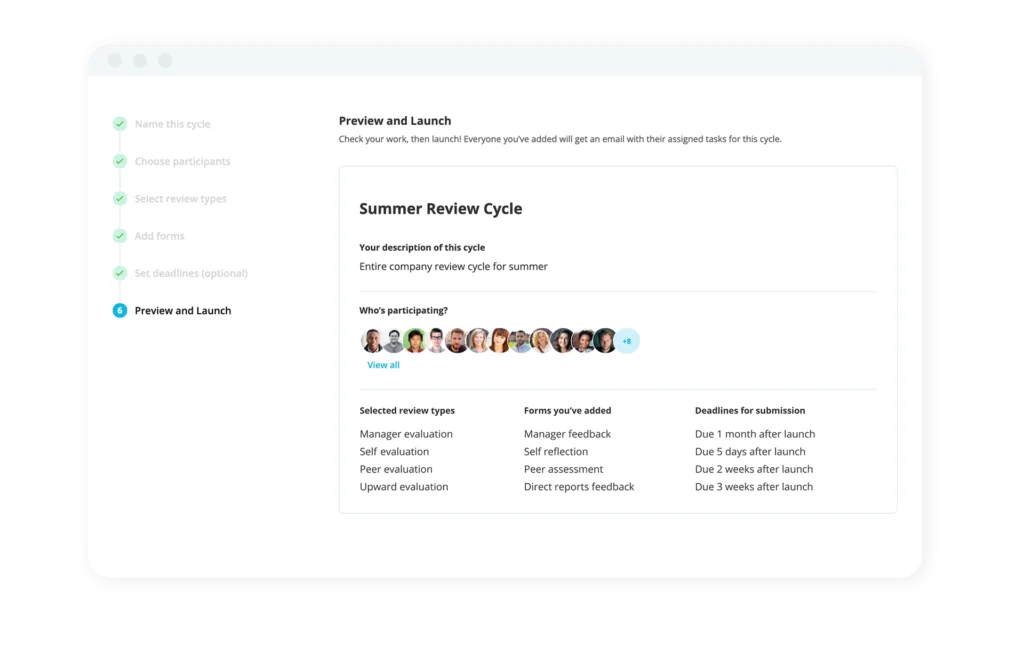Collaborative Learning: Definition, Examples and Benefits for the Workplace

Collaborative learning is one of the most impactful approaches to education and training in the workplace. This group-based method enables participants to learn from each other and work together to solve problems, creating a multitude of benefits for both organisations and individuals.
Drive employee performance to new heights with Personio. Find out how.What is Collaborative Learning?
Collaborative learning is an educational approach that uses groups to enhance the teaching and learning experience. Typically, this looks like groups of at least two learners working together to learn new concepts, solve problems or complete tasks.
By working in a group, learners can be more actively engaged in processing, understanding and utilising the concept or information presented to them. This is done in place of simply memorising certain facts or numbers by heart.
Common Collaborative Learning Theories
There are several collaborative learning theories that have shaped how organisations and educators utilise the method. Overall, the different theories support the concept that learning is social – it is enhanced by talking, trying to understand and working to solve certain challenges.
Below are the three most widely discussed theories of collaborative learning. The first two theories were concerned with the learning of children, while the third theory looked at the cognitive development of adults – however, all of these theories can be applied to other groups and have impacted the development of collaborative learning ideas.
1. Lev Vygotsky’s “Zone of Proximal Development”
Vygotsky’s work overall focused on the importance of social interaction in the learning process. One of his most important ideas was the Zone of Proximal Development, which separates what a person can and cannot do into two zones, with a third zone between them known as the zone of proximal development. This zone includes what a person has the ability to learn, but will need guidance to do so.
When you bring this idea into the sphere of collaborative learning, learners can rely on each other to learn concepts or accomplish tasks that they couldn’t do individually (i.e. in their zone of proximal development).
2. Jean Piaget’s Theory of Cognitive Development
Like Vygotsky, Piaget’s work was focused more on how children learn. His theory asserts that during a child’s development, they 1) build up their own understanding of the world around them, 2) encounter differences between their understanding and their actual experiences, and 3) rectify those differences by reorganising their mental processes.
3. Robert Kegan’s Cognitive Development Theory
Kegan’s theory on cognitive development was centred on what happens after a person turns 25 – the age at which many had theorised cognitive development actually ended.
Kegan, however, hypothesised that it was possible for humans to continue developing their systems for understanding meaning if they transformed how they interacted with the world. His framework outlined five stages – impulsive, imperial, socialised, self-authoring, and self-transforming mind – that lead to an adult reaching the highest stage of development.
Why is Collaborative Learning Important?
Collaborative learning can be an important tool both for organisations and individual learners – in a business context, for the company as a whole and for its employees.
There are many advantages of collaborative learning on both sides:
Organisational Advantages
Increases knowledge and skills of employees – Since collaborative learning can help individuals learn faster and retain more, using this method for employees will increase both the breadth and depth of skills available in the organisation’s workforce.
Improves cross-functional relationships – It can be difficult for employees to build relationships outside their direct team. Collaborative learning experiences are a great opportunity for individuals to meet new people and figure out how to work with them effectively. This can be especially beneficial for remote or hybrid teams.
Builds management and leadership skills – In a collaborative learning group – where everyone is responsible for organising, assigning, learning, and teaching – there is space for each member to develop both self-management abilities and better leadership skills.
Boosts workplace engagement and employee retention – When organisations give their employees the opportunity to learn more skills, they tend to have higher job satisfaction and are less likely to seek other opportunities. They’re also more productive and engaged, which means improved efficiency and results for employers.
Employee Advantages
Improves problem solving – Learning or working on a project in a group requires each person to develop, discuss, and analyse a number of ideas to find the best solution. This can improve their individual problem-solving skills as well.
Improves communication skills – Collaborative learning requires individuals to speak in front of their peers, to actively listen, and to both give and receive feedback. This can also boost confidence in the workplace.
Encourages understanding of diverse viewpoints – Learning in groups allows employees to hear viewpoints they may not have considered before. Studies have shown that exposure to ideas from people with different backgrounds can help people learn more.
Makes learning active – Collaborative learning is an active process: each learner has to organise their thoughts, share it with the group, listen to others, and respond – all of which encourages active engagement.
Collaborative Learning: Strategies For Implementation at Work
There are many opportunities to utilise collaborative learning at work. Here are a few strategies and examples in practice to ensure your organisation and employees get the most possible out of the experience:
1. Build smaller groups
While too small of a group (i.e. three or fewer) can leave the group with fewer diverse backgrounds to pull from, too big of a group (i.e. six or more) can be difficult to manage and create discrepancies in the amount of work per member. We recommend four to five members for a collaborative learning exercise in the workplace.
2. Have flexible rules
Rigidity can negatively impact the learning experience. It’s good to allow changes to happen throughout, as long as they don’t impact the end goal. For example: change up the roles periodically, encourage employees to resolve issues within the group itself, and offer opportunities for support and stress reduction within the learning environment itself.
3. Use groups for new product development or cross-functional updates
Think outside the box with how you utilise collaborative learning. For example, you could ask groups to brainstorm and create new product ideas. You could also have teams work together to build a presentation explaining their jobs (or specific projects) to other teams and departments. The options are endless.
Collaborative Learning: Frequently Asked Questions
What is the Purpose of Collaborative Learning?
The purpose of collaborative learning is to enhance the teaching and learning experience by creating groups of 2 or more learners. These groups can then work together to learn new concepts, solve problems, or complete tasks.
What Are Some Examples of Collaborative Learning Activities?
Examples of collaborative learning activities in the workplace include:
New product development
Explaining jobs or concepts cross-functionally
New employee onboarding
Evaluating training systems and methods
Practising team problem solving
Supporting Collaborative Learning with Personio
Continually supporting the learning and development of your employees is crucial for the health of the overall organisation. The performance and training management software in Personio can enable better learning outcomes, employee engagement, and productivity. Find out more here.

